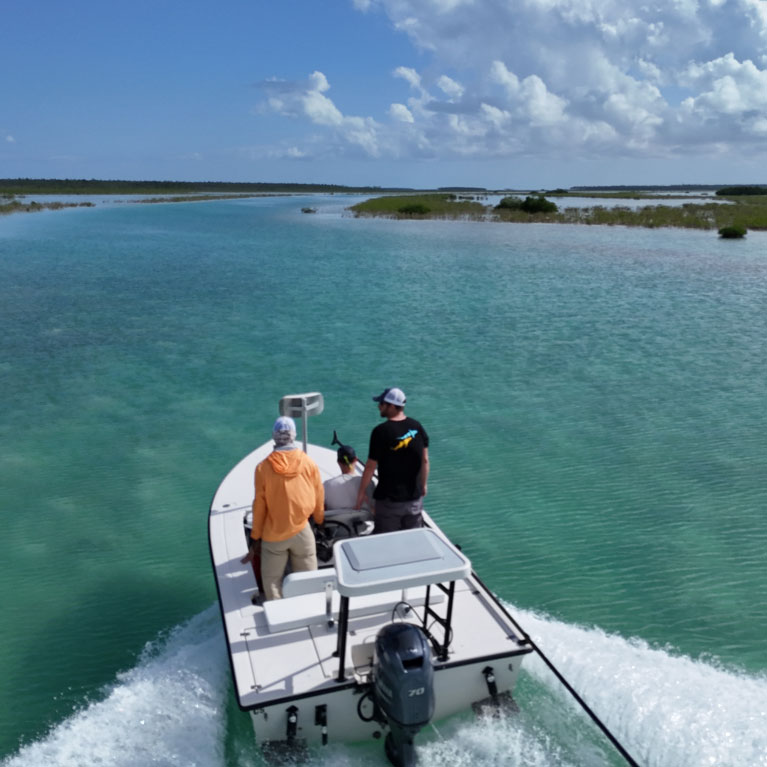The Bahamas: a beacon of hope for smalltooth sawfish
Outside the USA, The Bahamas is the only place where Critically Endangered smalltooth sawfish can reliably be found. Tristan wants to ensure that protection measures in The Bahamas are understood and enforced as far as sawfish are concerned to close the current gap between policy and the people. He’ll be using aerial surveys, sonar and BRUVs, combined with interviews that draw on local knowledge, to identify essential sawfish habitats that need protection. Engaging with the community through workshops and by training students and meeting with government, Tristan intends to advocate for smalltooth sawfish protection throughout The Bahamas’ territorial waters.
My passion for asking questions about animal behaviour has led me to spend more than a decade learning about the behavioural complexities of sharks. I have a BSc in Zoology and PhD in Behavioural Ecology from the University of Leeds, United Kingdom. On completing my doctoral research, I was awarded a prestigious Endeavour Fellowship by the Australian government and conducted a series of innovative experiments exploring shark cognition hosted by Macquarie University, Australia. From 2012 to 2018 I was the director of the Bimini Biological Field Station, where I established long-term research initiatives to investigate migration, philopatry and...
Inspiring Communities to Protect Sawfish
To improve smalltooth sawfish conservation at Andros through education, outreach and data collection that bolsters community and national support for species-specific legislation, the protection of critical habitats and the reduction of destructive practices.
The globally Critically Endangered smalltooth sawfish at Andros Island in The Bahamas were recently identified as a ‘beacon of hope’ population. However, while the largely uninhabited island provides refuge from many human actions, it also restricts our understanding of sawfish biology. By combining extensive public outreach, such as workshops, interviews and school visits, with <i>in situ</i> field sampling, our team will generate important data about this population.
The smalltooth sawfish is listed as Critically Endangered by the IUCN based on steep declines in abundance and geographic range. Severe reductions in population size also led to its listing under the US Endangered Species Act, which included implementing a national recovery plan. Consequently, the US smalltooth sawfish population is one of the best studied in the world and efforts have advanced our understanding of the species’ biology and ecology.
Outside the USA, the only country where smalltooth sawfish can be reliably encountered is The Bahamas. In 2011, The Bahamas declared its exclusive economic zone a shark sanctuary, preventing the harvest, capture and targeting of sharks. However, this does not include sawfish, which are not nationally protected. In 2017, the smalltooth sawfish was listed in Annex II of the Specially Protected Areas and Wildlife (SPAW) Protocol. The Bahamas ratified this agreement, committing to foster the protection and recovery of sawfish. However, enforcement of SPAW Protocol is inadequate in The Bahamas thus far, in part because of the disconnection between government policies and its citizens. Narrowing this gap is vital for sawfish conservation, particularly for remote islands where enforcement is very limited. Among these remote islands, Andros appears to be a refuge for sawfish. Indeed, it accounted for approximately 50% of all encounters throughout The Bahamas between 2002 and 2015, and was the only island where all life stages were documented. Andros’s 1.3 million-acre (526,600-hectare) West Side National Park provides extensive mangrove habitat that probably serves as essential sawfish habitat, and prohibits the harvesting of protected wildlife, including sawfish. However, our recent work indicates that this park may not be enough, since more than 50% of sawfish encounters by local stakeholders occur outside its borders. Considering that the Global Sawfish Conservation Strategy identified The Bahamas’ smalltooth sawfish population as a ‘beacon of hope’, greater protection at Andros may be critical to region-wide recovery.
- To describe temporal and spatial patterns in sawfish distribution at Andros and identify essential sawfish habitat, particularly nursery grounds, for protection. Three non-invasive techniques (aerial surveys, side-scan sonar, BRUVs) will be used to quantify sawfish distribution and abundance, alongside encounters with stakeholders building on local ecological knowledge.
- To develop a self-sustaining network that enables Androsians to report sawfish sightings independent of scientists in order to expand the infrastructure currently used to monitor sawfish at Andros.
- To lead community workshops and school visits to empower Androsians as citizen scientists and conservation stewards. By using videos, infographics and small group exercises to illustrate the value of Andros as a sawfish refuge, we aim to instil community pride in conservation and provide guidance for adjusting daily habits to improve ecosystem health.
- To provide training and supervision for BAMSI college students to contribute to data collection and use this as part of the requirements for their college internship programme and research project.
- To meet with government organisations and stakeholders annually in Nassau to present new findings, discuss conservation objectives and initiatives and advocate for smalltooth sawfish species-specific protection across The Bahamas’ exclusive economic zone.


